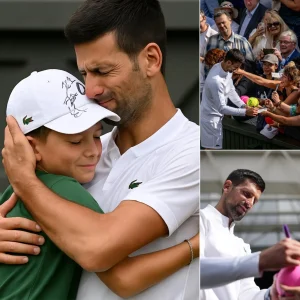In a political climate already charged with tension, a recent claim of a dramatic clash on live television has captured widespread attention. The alleged confrontation between MSNBC host Rachel Maddow and White House Press Secretary Karoline Leavitt reportedly unfolded during a segment on The Rachel Maddow Show, spiraling from a heated debate into a fiery exchange that culminated in Maddow demanding security remove Leavitt from the set. The incident, described as leaving Maddow visibly shaken and viewers stunned, has sparked intense discussion across social media and news platforms. However, a closer examination reveals that this explosive narrative lacks credible evidence and appears to be a fabrication designed to fuel online engagement.

The story, as circulated in various YouTube videos and social media posts, paints a vivid picture: a routine political interview escalating into chaos as Leavitt, known for her sharp rhetoric and alignment with the Trump administration, challenges Maddow with a provocative remark. Some accounts claim Leavitt accused Maddow of ignorance, delivering a scathing line like, “How could you be so stupid?” This moment, according to the narrative, stunned Maddow, typically composed, and pushed her to call for security to eject Leavitt from the studio. The alleged exchange was framed as a symbol of the deepening ideological divide in American media, with Leavitt’s boldness applauded by some and condemned by others as a breach of civility.
Yet, fact-checking efforts by outlets like Snopes and MEAWW News cast serious doubt on the incident’s authenticity. A search for “Karoline Leavitt on Rachel Maddow” across platforms like Google News yields no credible reports of such an event. Snopes, after investigating similar claims, contacted the White House, receiving a curt response: “Fake.” YouTube videos promoting the story often include disclaimers admitting that “no actual debate” between Leavitt and Maddow occurred, suggesting the content is speculative or opinion-based rather than factual. Some of these videos, which garnered tens of thousands of views, appear to rely on AI-generated narration and scripting to amplify their sensational appeal.
The absence of video evidence is particularly telling. Given the high-profile nature of both figures—Maddow, a prominent progressive commentator, and Leavitt, the youngest White House Press Secretary in history—a confrontation of this magnitude would likely have produced verifiable footage or coverage from reputable sources. Instead, the narrative seems to have originated from unverified sources, including YouTube channels and websites like 88buzz.xyz and newshour21.com, which have a history of sharing unconfirmed or misleading stories. Similar false claims about Leavitt debating other talk show hosts, such as Jimmy Kimmel and Stephen Colbert, have also been debunked, pointing to a pattern of fabricated “clash” narratives designed to exploit polarized audiences.
This incident, or lack thereof, underscores the challenges of navigating today’s media landscape, where sensationalized stories can spread rapidly. The claim aligns with Maddow’s known criticism of the Trump administration, which may lend it a veneer of plausibility to some viewers. However, its reliance on unverified sources and lack of substantiation highlights the dangers of misinformation in a polarized era. Social media platforms like Threads and X have amplified these claims, with posts framing the alleged showdown as a defining moment in political discourse. Yet, without concrete evidence, the story serves more as a reflection of the public’s appetite for dramatic confrontations than as a factual account.

The broader implications of such narratives are significant. They contribute to a media environment where personal attacks and spectacle often overshadow substantive policy discussions. While some may view Leavitt’s alleged boldness as a stand against perceived media bias, others see it as emblematic of a coarsening public discourse. Ultimately, the absence of evidence for this “explosive confrontation” suggests it is a manufactured controversy, crafted to generate clicks and views rather than inform. As the lines between fact and fiction blur, audiences are left to question whether such stories illuminate or obscure the realities of political divides.






